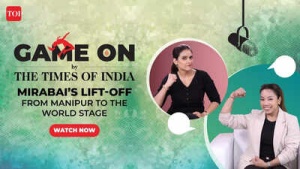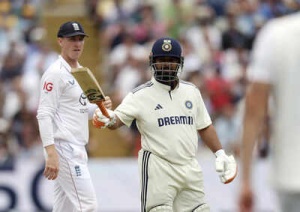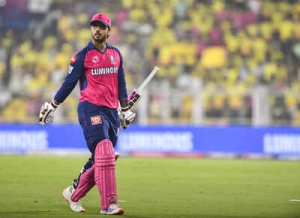When I first read that SZA had been named Artistic Director at Vans in a multi-year partnership, I stopped scrolling. It sounded exciting—a powerhouse voice in music stepping into the sneaker world, ready to bring her cultural firepower to a heritage label. But after the initial thrill, the real question landed: should celebrities really be creative directors of fashion brands?
/filters:format(webp)/elle-india/media/media_files/2025/08/19/sza-joins-vans-as-artistic-director-2025-08-19-13-06-34.jpg)
Because SZA isn’t alone. A$AP Rocky has just joined Ray-Ban in a similar role. Pharrell Williams has been the creative head of Louis Vuitton menswear, perhaps the most high-profile crossover of them all. These are not one-off stunts anymore—they’re part of a growing fashion phenomenon where pop stars, rappers, and global celebrities are given the title of Creative Director. And while the headlines are loud, the campaigns are glossy, and the collaborations draw clicks, you can’t help but wonder if we’re confusing visibility with vision.
The role of a creative director is one of the most defining in fashion. The title carries weight, and it’s the heartbeat of a brand. As Vaishnavi Bala, founder and designer of Balav, points out, “The role of a creative director is one of the most defining positions in fashion. It is not just about deciding what looks cool in a campaign or putting a celebrity face to a product. It is about shaping the very DNA of a brand, and living the vision.”
Designers spend years learning the grammar of fashion—brand heritage, colour theory, proportions, fabric construction, silhouettes, and even the cultural context of clothes. It is a job rooted in history, training, and experience. And when you see a designer’s collection walk down the runway, you’re not just looking at pretty clothes; you’re looking at decades of study, dedication, a long and hard mentorship under other senior designers and an ongoing dialogue with the brand’s DNA.
And that’s why handing this title over to pop stars feels shaky. Because no matter how talented they are in their own art form, fashion isn’t a side hustle—it’s an entire discipline.
That’s not to say celebrities don’t bring value. On the contrary, they bring something very powerful—reach, influence, and cultural momentum. When Pharrell joined Louis Vuitton, it sent a jolt through the industry. Suddenly, the house wasn’t just about luxury; it was about global relevance. When SZA walks into Vans, she’ll pull in an audience that may never have looked twice at the brand. A$AP Rocky at Ray-Ban instantly signals youth, music, and cultural coolness.
/filters:format(webp)/elle-india/media/media_files/2025/08/19/spring-summer-2026-show-lv-2025-08-19-13-09-21.jpg)
As Bala adds, “Pop stars and celebrities bring something equally valuable to the table, but of a very different nature. Their expertise is in performance, culture, and influence. They have the power to reach millions of people instantly. Their presence alone can draw attention, build trust, and make a brand feel relevant to a wider audience.”
And she’s right. A brand gets instant headlines and hype when a star comes on board. That kind of visibility is marketing gold. But hype is not heritage. A pop star might be the perfect face for a brand, but that doesn’t make them the brain behind it.
There are models that make more sense. Guest collaborations, for example, can be exciting without risking the brand’s core identity. Lewis Hamilton with Dior, or Gigi Hadid and Zendaya with Tommy Hilfiger—these weren’t long-term contracts, but short, fun collabs that made sense for both parties. They allowed celebrities to infuse their personal style into a collection, while trained designers held the larger vision intact.
/filters:format(webp)/elle-india/media/media_files/2025/08/19/much-love-to-everyone-2025-08-19-13-13-20.jpg)
That balance feels right. It gives the celebrity space to express themselves while still preserving the brand’s integrity. “Let the designer remain the creative brain of the house, ensuring consistency and depth, while the celebrity becomes a co-director of storytelling and cultural positioning,” says Bala.
But multi-year creative director contracts? That’s when it begins to feel like a branding gimmick taking over the principal design strategy.
At the end of the day, fashion is both art and business. It needs the rigour of trained designers and the reach of celebrities. Designers give brands vision, depth, and continuity. Celebrities give them attention, energy, and relevance. But the two roles should never be interchangeable.
The real danger is when brands let short-term visibility override long-term vision. Because once you hand over the keys to someone who doesn’t speak the technical language of fashion, you risk losing the very essence of what makes the brand unique. Yes, you’ll trend for a season, maybe two. But fashion legacies are built on coherence, not clout.
In the end, fashion needs both the discipline of trained designers and the influence of celebrities. But the face should never replace the brain. Otherwise, what we’ll be left with isn’t fashion—it’s just marketing dressed up as design.
India’s Luxury Blind Spot: Are We Ignoring Exploitation at Home?
Newer articles
Older articles
 Mirabai Chanu Reveals Constant Weightlifting Pressure: Training and Diet Dominate Even Family Time
Mirabai Chanu Reveals Constant Weightlifting Pressure: Training and Diet Dominate Even Family Time
 Bangladesh's Shadman Backs Batters After Day 1 Setbacks Against Sri Lanka
Bangladesh's Shadman Backs Batters After Day 1 Setbacks Against Sri Lanka
 ICC Test Rankings: Pant Hits Career High, Bumrah Remains Top Bowler, Root Still Reigns
ICC Test Rankings: Pant Hits Career High, Bumrah Remains Top Bowler, Root Still Reigns
 Gavaskar Calls for Kuldeep Yadav's Inclusion in Second Test Amid Concerns Over Bumrah's Fitness and Middle-Order Stability
Gavaskar Calls for Kuldeep Yadav's Inclusion in Second Test Amid Concerns Over Bumrah's Fitness and Middle-Order Stability
 SA20 Auction: Teams Allowed Six Retentions Amidst Salary Cap Boost and RTM Introduction
SA20 Auction: Teams Allowed Six Retentions Amidst Salary Cap Boost and RTM Introduction
 Prithvi Shaw Admits to Career Setbacks: Faulty Choices and Lost Focus Derailed Cricket Trajectory
Prithvi Shaw Admits to Career Setbacks: Faulty Choices and Lost Focus Derailed Cricket Trajectory
 IND vs ENG, 2nd Test: Rishabh Pant's Calm Reply Deflates Harry Brook's Sledge Attempt
IND vs ENG, 2nd Test: Rishabh Pant's Calm Reply Deflates Harry Brook's Sledge Attempt
 Prasidh Krishna Vows to Sharpen Bowling After Headingley Setback: Focus on Length and Economy
Prasidh Krishna Vows to Sharpen Bowling After Headingley Setback: Focus on Length and Economy
 Gujarat Cricket Association to Debut T20 League in 2025-26 Season
Gujarat Cricket Association to Debut T20 League in 2025-26 Season
 Nitish Rana Poised for Delhi Comeback After Disappointing Uttar Pradesh Stint
Nitish Rana Poised for Delhi Comeback After Disappointing Uttar Pradesh Stint